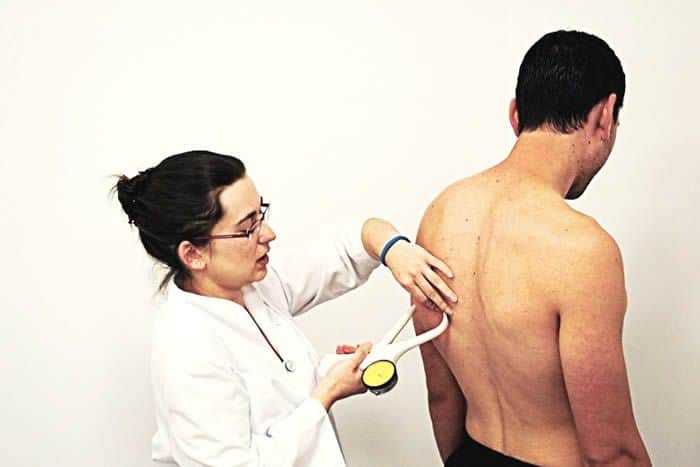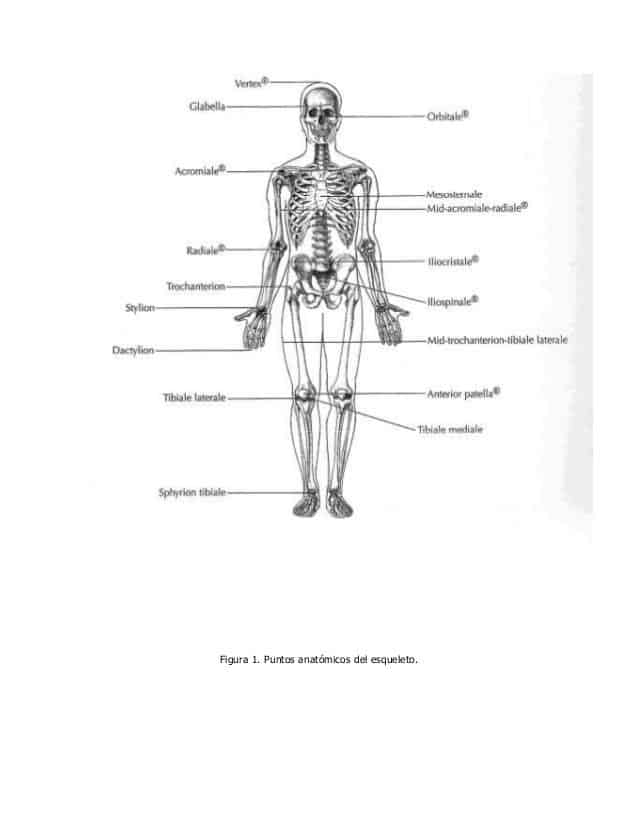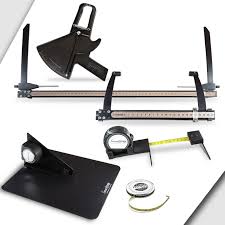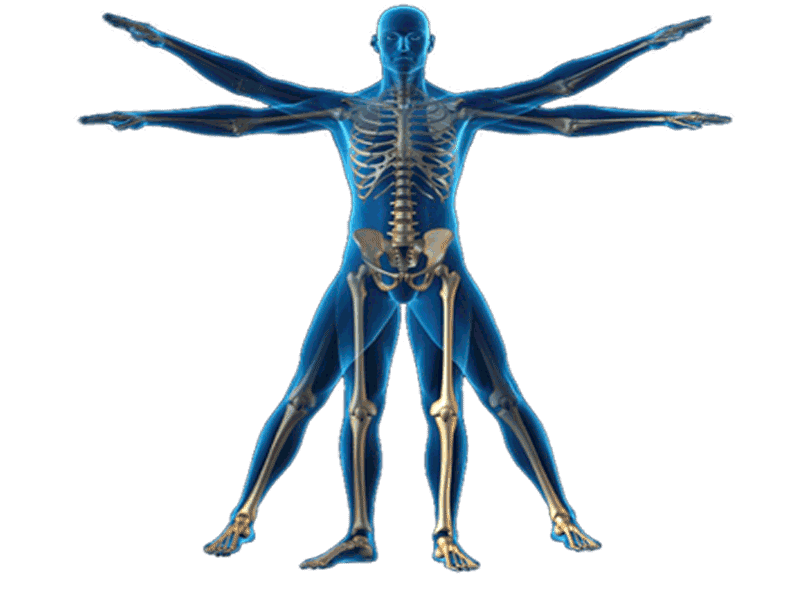In this article, concepts about kineanthropometry will be explained, based on the works of great anthropometrists and experts in the field (1,2).
What is kineanthropometry?
Kineanthropometry is a science that studies the shape, composition, and proportion of the human body with measurements to understand human movement in relation to exercise, development, nutrition, health, etc. Different measurements of the size and proportions of the human body are taken.
Anthropometric prediction equations allow estimating body density, and from this value, we can calculate the percentage of body fat (%BF) and by derivation the fat-free mass (FFM) (3).
Measuring skinfolds is used to estimate body composition (BC) in multiple populations and with different characteristics, such as children, adults, and athletes.
The international organization that regulates it is ISAK, whose accreditation system has been in effect since 1996. According to this organization, there are 4 levels of anthropometrists:
- Technicians, restricted profile (17 measurements)
- Technicians, full profile (42 measurements)
- Instructor
- Criterion anthropometrist
ISAK was founded in 1986 in Glasgow (Scotland) although previously there was the International Working Group on kineanthropometry (IWGK), founded in 1978 by UNESCO.
Measurement
In this aspect, it is important to emphasize the need for informed consent, verbal and written, expressed in simple language, must be obtained from each subject or, failing that, from their parents or legal guardians if the subjects are minors or unable to provide an informed decision.
An attached sheet should be provided to the subjects informing them of the procedure of the anthropometric assessment: what they should wear, what measurements will be taken, who will take those measurements, and the approximate duration of those measurements.
The informed consent must:
- Explain that the subject is free to withdraw from the measurements at any time without any detriment to them.
- Make it clear that the data published from the measurements will not reveal the identity of the subjects without their consent.
- Provide the contact details of the person and the institution responsible.
- Leave a space for the name and signature of the subject, and also for the name and signature of the person in charge, and physically present, at the time of the measurements.
No individual or organization should exert any pressure on the subject to participate in the measurements.

Regarding the measurement:
- All procedures used for the measurements must be approved by the competent ethics committee.
- The anthropometrist’s hands must be cleaned before each measurement.
- Measurements should be taken in private in a separate room or reserved space.
- The measurement room should offer privacy and be at a comfortable temperature for the subject.
- Each subject should be offered the option to be accompanied by a friend or family member, which is important when it comes to children.
It should be considered that all people have an area around their bodies, known as “personal space,” which when invaded makes them feel uncomfortable or threatened.
This is particularly true regarding the front part of the subject, and that is why most measurements are taken from the side or behind. If possible, measurements are performed by people of the same sex.
Procedures should be clearly established in writing to address complaints and incidents that may occur.
Regarding clothing:
- Anthropometrists should be sensitive and respect the cultural beliefs and traditions of the subject.
- To ensure that measurements are taken as quickly and efficiently as possible, the subject should be asked to present themselves with a minimum of clothing. Swimsuits (two-piece in the case of women) are ideal for the ease they offer in accessing measurement sites.
- Underwear is not considered appropriate for repetitions.
- Invite the subject to move their clothing themselves.
- The clothing should have minimal thickness and conform to the natural contours of the body. It should also allow access to areas of the body where skinfold measurements are taken.
Occasions when not to measure
- Extremely hard skin, significant subcutaneous adiposity, or injuries. In these cases, it is recommended not to take measurements to avoid potential errors and embarrassing situations.
- The anthropometrist should not take any measurement that compromises the physical or emotional well-being of the subject.
General care would be:
- Appropriate room temperature.
- Athlete barefoot and with little clothing.
- Calibrate the instruments.
- Pre-mark the anatomical points.
Anatomical points are marked by adopting the anthropometric position (it is the anatomical position but with the palms of the hands to the side and the thumb forward), and all are performed on the right side (if the athlete is left-handed, they are measured both on the right and left, and if there is an injury on the right side, only the left is measured).
The subject adopts a relaxed position, standing, with the arm hanging to one side, the forearm in semi-pronation, and the thumb forward.
Types of measurements
In this aspect, several types are differentiated (those in blue are included in ISAK level 1, the rest, along with the others, in level 2):
- Basic measurements: body mass, height, sitting height, and arm span.
- Skinfolds: triceps, subscapular, biceps, iliac crest, supra-spinal, abdominal, inner thigh, and medial leg. These skinfolds measure the thickness of subcutaneous adipose tissue indirectly (4).
- Circumferences: head, neck, relaxed arm, flexed and contracted arm, forearm, wrist, chest, waist, gluteus, thigh, mid-thigh, leg, and ankle.
- Lengths: acromiale-radiale, radiale-stylion, midstylion-dactylion, iliospinal height, trochanteric height, trochanterion-tibiale laterale, lateral tibial height, and tibiale mediale-sphyrion tibiale.
- Diameters: biacromial, A-P of the abdomen, biiliocrestal, foot length, transverse of the chest, A-P of the chest, biepicondylar of the humerus, bistyloid (wrist), biepicondylar of the femur.
Once the measurements are obtained, a series of equations would be applied to obtain the fat percentage, muscle, bone, and residual, as well as height and weight.

Fields of action of kineanthropometry
- Sport-performance: being able to compare the physical characteristics of high-level athletes with those of younger athletes playing in the bases of sports disciplines.
- Nutrition: assessment of fat gains/losses, for example.
- Growth and development of bone and/or muscle tissue.
- Ergonomics
- Health: it is useful for the prevention of various pathologies. For example, having an elevated abdominal circumference is related to an increased risk of metabolic and/or cardiovascular diseases.
Kineanthropometry material
- Stadiometer
- Scale
- Anthropometric tape: mainly used for circumferences.
- Caliper: to measure skinfolds.
- Anthropometer
- Segmometer: for small lengths and diameters.
- Thickness compass: to measure the anteroposterior depth of the torso and other trunk depths.
- Caliper: to measure the diameters of the humerus and femur.
- Anthropometric box

Is bioimpedance also valid?
It is a fast, cheap, and non-invasive method for evaluating body composition. Electrical impedance measures the opposition to the flow of a current through the entire body.
The resistance or impedance to the flow of current will be greater in individuals with large amounts of adipose tissue, as it is a poor conductor of electricity due to its low water volume. Aqueous tissues with high electrolyte dissolution (muscle tissue) will be great electrical conductors, unlike fat and bone.
Impedance measurements are closely related to the total body water amount (3,4). Most experts equate its effectiveness with the skinfold method, although in obese or very thin individuals it is less accurate. However, others doubt its effectiveness, arguing that factors such as hydration, skin temperature, and racial characteristics influence it (3).
This article presents a general introduction to kineanthropometry, which is complex but at the same time useful in different sectors.
Bibliographic references
- Stewart, A., Marfell-Jones, M., Olds, T., & De Ridder, H. (2011). International protocol for anthropometrist assessment. Australia: ISAK.
- Sillero, M. (2004). Theory of Kinanthropometry. Polytechnic University of Madrid. URL: http://www. cafyd. com/doc1sillero05. pdf. Madrid (Spain).
- Alvero Cruz, J. R., Cabañas Armesilla, M. D., Herrero de Lucas, A., Martínez Riaza, L., Moreno Pascual, C., Porta Manzañido, J., … & Sirvent Belando, J. E. (2009). Protocol for body composition assessment for sports medical recognition. Consensus document of the Spanish Group of Kineanthropometry of the Spanish Federation of Sports Medicine. Archives of sports medicine, (131), 166-179.
- Coburn, J., & Malek, M. (2014). NSCA manual (1st ed.). Badalona, Spain: Paidotribo.

